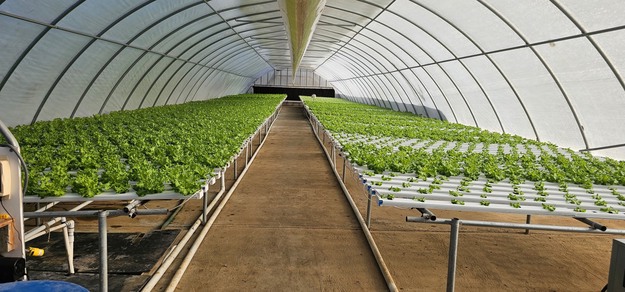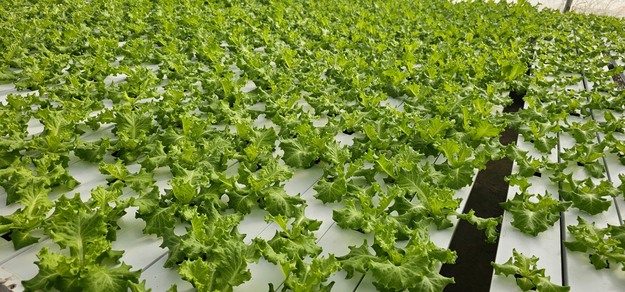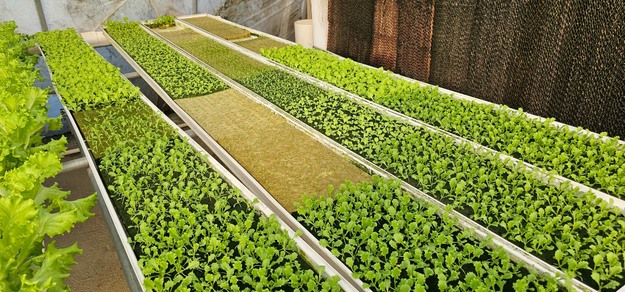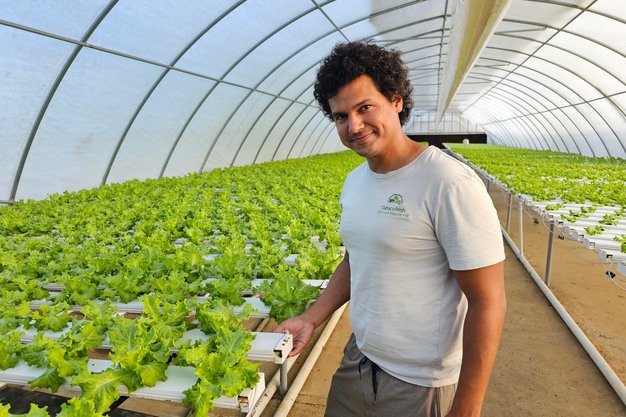In Aruba, an island the size of Texel that sits just a stone's throw from Venezuela and neighboring islands Curaçao and Bonaire, Cunucu Fresh, together with a handful of other greenhouse growers, is making a significant contribution to the burgeoning horticultural sector that aims to make the food supply of this island of 120,000 inhabitants less dependent on imports. "The growth opportunities for cultivation initiatives are huge, as the primary sector is virtually non-existent in Aruba and, of course, in addition to the local population, the more than two million tourists who visit every year also need to be supplied with food," states Jake Arends, current manager of Cunucu Fresh, which was founded by his father in 2017. There are opportunities, but there is also no shortage of challenges, according to a conversation with Jake.
Seven years after building its first greenhouse, Cunucu Fresh is the proud owner of five facilities, accounting for an area of 4,300 m². It started by growing lettuce, and after a few trials with cucumber and other crops, it was decided to go full-on as the first choice. "We grow frisée, Batavia, also some Lollo Rossa, and of course Romaine lettuce. The latter is the most popular on the island, but perhaps also the most difficult to grow. We are still looking for the variety best suited to the growing conditions in Aruba."
 Cooled water flows over the honeycomb back wall, bringing down the temperature
Cooled water flows over the honeycomb back wall, bringing down the temperature
NFT system
Jake explains that the lettuce, which is grown on water at Cunucu Fresh using a Nutrient Film Technique (NFT) system and for which the seeds are sourced from US-based Johnny's Seeds and Rijk Zwaan, does not grow as large as people in Europe are used to. "We don't get 200-gram heads, but Romaine lettuce does get mass and is also very tasty. Batavia does get big, but on the other hand, is slightly lighter in weight than usual."
The horticulture sector is in its infancy
At Cunucu Fresh, 800 heads are harvested every day. A cultivation cycle takes just over six weeks. The customer base includes both retail - large and small supermarkets - and food service. "We are certainly not the only cultivation company supplying lettuce to retail, we have some competitors, although that might be a big word," he says. Because the island's horticulture sector is still in its infancy, all growers have more demand than supply. Customers are quite willing to buy locally, and consumers consciously choose packaging in shops that display a label of local cultivation. After all, vegetables sourced from Aruba are brand new and the carbon footprint is much lower than that of imported produce. This, too, is a consideration that consumers should not underestimate today," says Jake.

Lettuce grown in gutters
Three types of soil
Cunucu Fresh also receives more orders than it can deliver. "I would therefore like to build more greenhouses, but do run into some challenges. Getting financing is not easy, water and electricity are expensive and the quality and continuity of supply are sometimes a problem, and finding land to grow on is also a real undertaking. Banks often make it difficult to get a loan and the financing market here is far from modern. Moreover, rented land - one of the three types of land in Aruba besides leasehold and owner-occupied land - cannot be bought/sold, making the banking sector reluctant to issue large loans to build facilities on such land. However, it is the most commonly used type of land for horticultural activities. There are even some restrictions in terms of building regulations on leasehold land. In my opinion, this ownership system requires modernization anyway."
 Propagation
Propagation
Solar panels as part of the solution
Jake also regrets the recent withdrawal of the Growth Fund from the Dutch government. Water and power are also pain points. "Water has always been a problem in Aruba. The climate here is quite dry, even drier than in Curaçao, where they also have more groundwater. In addition, energy costs are very high and growing lettuce without energy is not an option here. After all, the greenhouses and the water have to be cooled. You are also never 100% sure of the power supply. So you need to have a buffer. Laying solar panels is partly a solution, but again a big investment. And who will lend the money? One of our greenhouses, meanwhile, runs partly on solar power."

Despite expensive power and high overall growing costs, Jake argues that his lettuce is price-competitive with the imported product. "And as we continue to grow, it will only get better because of economies of scale. Especially in winter, when the northern hemisphere, where most of Aruba's imported lettuce comes from, needs to be fired, we go well below the price. In summer, the opposite movement occurs. I work year-round with a fixed price. And as said, the demand for our lettuce is still much higher than the supply. So we look to the future with confidence," Jake concludes.
For more information:
Jake Arends
Cunucu Fresh
Moko 1, Oranjestad, Aruba
Tel: +297 699 9091
[email protected]
Facebook










